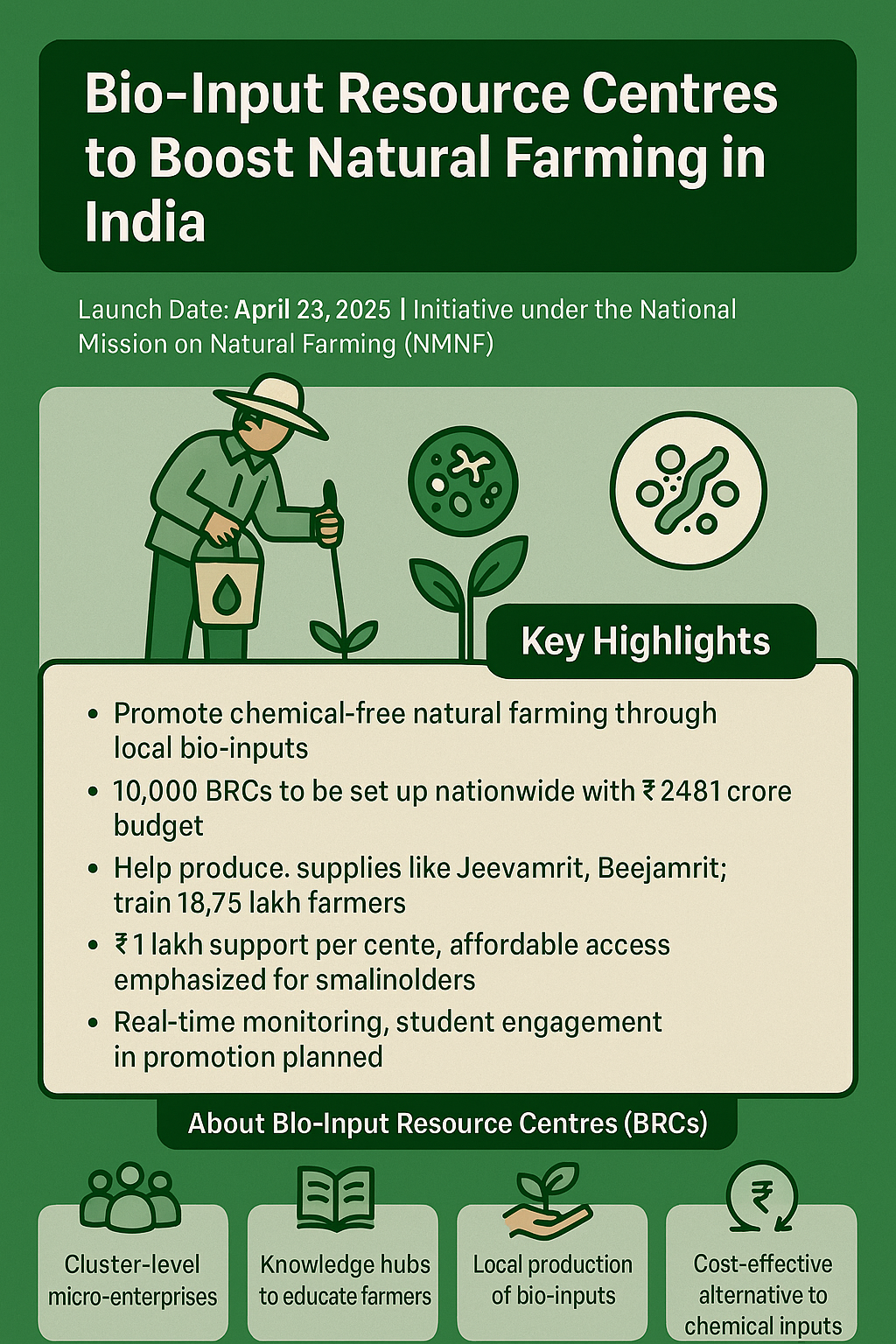
📅 May 13, 2025, Post 4: National Technological Day |High Quality Mains Essay | Prelims MCQs
National Technological Day

NATIONAL HERO — PETAL 004
Date: May 13, 2025
Thematic Focus: Science & Technology, Defence, Innovation
🌿 Intro Whisper
From the deserts of Pokhran to the stars beyond the Moon, India’s journey in technology is a symphony of courage, curiosity, and collective will.
🔍 Key Highlights
- May 11 is celebrated annually as National Technological Day in India, commemorating the 1998 Pokhran-II nuclear tests.
- Theme 2025: YANTRA — celebrating transformation through tech innovation.
- Major technological feats were achieved that same day:
• Successful Trishul missile test
• Maiden flight of Hansa, an indigenous aircraft - India’s rise in global indices:
• 39th in Global Innovation Index (2024)
• 6th in global IP filings (WIPO)
• 49th in Network Readiness Index (up from 79th in 2019)
🛠️ Concept Explainer: India’s Homegrown Tech Renaissance
India’s tech odyssey spans agriculture, defence, space, and digital infrastructure:
- Defence: Agni & Prithvi missiles, Tejas LCA, INS Arihant, BrahMos, INS Vikrant
- Space: Chandrayaan, Mangalyaan, Aditya-L1, Gaganyaan (2027), Shukrayaan (2028)
- Digital: Aadhaar, UPI, JAM trinity revolutionized access and payments
- Innovation Ecosystem:
• Atal Innovation Mission (AIM)
• NM-ICPS: Boost to AI, robotics, quantum computing
• iDEX & TDB: Supporting defence and startup R&D - National Quantum Mission: ₹6000+ Cr initiative with 152 researchers across India
🧭 GS Paper Mapping
- GS Paper 2: Government initiatives, E-Governance
- GS Paper 3: Science & Tech developments, Space, Defence, ICT
- Essay Paper: Role of indigenous innovation in national development
💫 A Thought Spark — by IAS Monk
“Machines may be lifeless, but the spirit that creates them is alive with dreams. On this day, we salute not just the tools — but the timeless will that forges them.”
High Quality Mains Essay For Practice :
Word Limit 1000-1200
Forging the Future: India’s Journey Through Technology, From Pokhran to the Cosmos
Introduction: A Blast that Echoed Beyond the Desert
On May 11, 1998, the winds of the Thar desert carried more than heat and dust—they carried history. As nuclear tests roared beneath the sands of Pokhran, India declared its arrival as a self-reliant technological power. That day wasn’t just about weaponry. It became a symbolic turning point for a nation long underestimated in scientific circles, and marked the beginning of a new national consciousness—where innovation, not imitation, would be the path forward.
Designated by former Prime Minister Atal Bihari Vajpayee as National Technology Day, May 11 is not merely a day of remembrance but a celebration of India’s ingenuity. It’s a tribute to scientists, engineers, technocrats, and dreamers who build not only machines—but a nation’s future. Today, as the theme “YANTRA” reflects, India continues to embrace transformation through technology, boldly pushing boundaries from atom to algorithm, missile to Mars, and chipset to Chandrayaan.
Historical Milestones: From Bhabha’s Vision to Digital India
India’s tryst with technology began long before independence. Pioneers like Homi Jehangir Bhabha sowed the seeds of nuclear research in the 1940s, envisioning India as a self-reliant scientific power. Post-independence, institutions like the Indian Institutes of Technology (IITs), the Indian Space Research Organisation (ISRO), and the Defence Research and Development Organisation (DRDO) embodied that vision.
The Pokhran-II nuclear tests were a culmination of decades of effort. But the very same day in 1998 also witnessed two other technological firsts: the successful test of the Trishul missile and the maiden flight of Hansa, India’s indigenous light aircraft. This convergence of nuclear, defence, and aviation milestones on one day transformed May 11 into a sacred symbol of India’s homegrown capability.
Technological Renaissance: The Age of “Make in India”
In the 21st century, India’s aspirations have grown bolder. The launch of the Make in India initiative in 2014 triggered an inflection point in technological and industrial development. Defence production, electronics manufacturing, semiconductor design, and aerospace engineering witnessed substantial momentum.
The Tejas Light Combat Aircraft (LCA), the Agni and Prithvi missile series, the INS Arihant nuclear submarine, and the INS Vikrant, India’s first indigenous aircraft carrier, are all manifestations of this indigenous capability. The BrahMos missile, co-developed with Russia, has become one of the fastest cruise missiles in the world, elevating India’s status in global defence markets.
This defence indigenization is not merely strategic—it’s economic. It reduces import dependency, boosts innovation ecosystems, and creates skilled employment across the country.
Reaching for the Stars: India’s Space Leap
India’s space programme, once mocked for launching satellites on bullock carts, is today a symbol of frugality-driven excellence. Missions like Chandrayaan-1, which discovered water molecules on the moon, and Mangalyaan, which reached Mars in its first attempt at a fraction of NASA’s cost, captivated global attention.
The 2023 soft landing of Chandrayaan-3 near the Moon’s south pole established India as only the fourth country to achieve such a feat—and the first to do so in this region. The Aditya-L1 mission now monitors the Sun’s corona, while Gaganyaan is preparing for India’s first human spaceflight.
The upcoming Shukrayaan Venus mission and rising private participation through IN-SPACe and NSIL mark the next phase: an ecosystem where India isn’t just a spacefaring nation, but a leader in planetary science and commercial launches.
Digital Transformation: From Identification to Innovation
Parallel to physical technologies, India has achieved a silent revolution in digital infrastructure.
The Aadhaar biometric system, the Unified Payments Interface (UPI), and platforms like DigiLocker, e-Sanjeevani, and CoWIN have transformed governance, banking, healthcare, and social security. India now leads the world in real-time digital payments, processing more than any other country—outpacing China and the U.S. combined.
Digital India is not just about mobile apps or e-governance—it’s a new social contract that empowers citizens, promotes transparency, and reduces corruption. It has turned smartphones into post offices, banks, classrooms, and ration shops for millions.
Innovation and Intellectual Power: India’s Global Footprint
India’s rise is now visible on global indices. As of 2024:
- 39th in the Global Innovation Index
- 6th in global Intellectual Property filings (WIPO)
- 49th in the Network Readiness Index, up from 79th in 2019
These reflect a dramatic upscaling in research ecosystems, IP awareness, and start-up entrepreneurship. India is now the third-largest startup ecosystem globally, with unicorns emerging from edtech, fintech, healthtech, agrotech, and AI.
Missions like the Atal Innovation Mission, the INSPIRE Program, and the National Mission on Interdisciplinary Cyber-Physical Systems (NM-ICPS) are nurturing innovators from school labs to IITs to corporate boardrooms.
The National Quantum Mission and National Supercomputing Mission signal India’s ambition to lead in emerging frontiers—from AI to quantum mechanics.
Agricultural and Industrial Achievements: Not Just High-Tech
India’s technological journey is not limited to labs or space stations—it includes farms, dairies, and factories.
- The Green Revolution made India food-secure.
- The White Revolution made India the largest milk producer.
- Modern agro-tech, satellite-driven irrigation, and biotech seeds continue to transform rural livelihoods.
In industry, 5G deployment, semiconductor policy, and electronics manufacturing clusters are being fast-tracked to reduce import dependency and build capacity in future-critical sectors.
Challenges and the Road Ahead
Despite these advances, India faces serious gaps:
- R&D Investment: India’s GERD (Gross Expenditure on R&D) remains below 1% of GDP, compared to 2–4% in advanced economies.
- Brain Drain: Many top researchers still migrate abroad due to better infrastructure, pay, and academic freedom.
- Skill Gaps: Rapid automation, AI, and robotics demand newer skillsets that traditional curriculums don’t offer.
- Rural-Urban Tech Divide: Access to reliable internet, tech labs, and digital literacy remains patchy in rural areas.
Addressing these requires policy reforms, private-sector R&D investment, and skilling programs that blend science with societal needs.
Conclusion: Technology as a Social Force
India’s technological progress is not merely about dominance or deterrence—it’s about dignity. Whether it’s giving a biometric identity to the homeless, precision-medicine tools to rural clinics, or cheap clean energy to villages—technology is India’s new vocabulary of inclusion.
National Technology Day reminds us that every rocket launched, every line of code written, every circuit designed—echoes with the collective aspiration of 1.4 billion people.
India’s future won’t be built in glass towers alone—it will be written in labs, sketched on drawing boards, tested in workshops, and imagined by children inspired by Homi Bhabha, A.P.J. Abdul Kalam, and the anonymous innovators behind every leap.
As the desert sands of Pokhran once shifted beneath a nuclear shockwave, so too must our mindset shift—from merely using tools to building them, from consuming innovation to leading it.
Closing Quote
“Technology is a word that describes something that doesn’t work yet.” — Douglas Adams
In India’s case, we are learning to make it work—for all.
Target IAS-26: Daily MCQs :
📌 Prelims Practice MCQs
Topic:
MCQ Type 1 — How many are correct?
Consider the following statements about India’s recent technological achievements:
1)India’s Chandrayaan-3 mission made the world’s first soft landing on the Moon’s south pole.
2)India is ranked 6th globally in Intellectual Property (IP) filings as per the 2024 WIPO report.
3)India’s Aadhaar is the world’s second-largest biometric identification system.
4)The National Quantum Mission aims to promote research in quantum sensing, communication, and materials.
How many of the above statements are correct?
A) Only two
B) Only three
C) All four
D) Only one
🌀 Didn’t get it? Click here (▸) for the Correct Answer & Explanation
✅ Correct Answer: B) Only three
🧠 Explanation:
•1) ✅ True – Chandrayaan-3 achieved the first-ever soft landing near the Moon’s south pole.
•2) ✅ True – India is ranked 6th in IP filings as per WIPO 2024.
•3) ❌ False – Aadhaar is the largest biometric ID system in the world, not the second-largest.
•4) ✅ True – The mission supports quantum sensing, communication, computing, and materials.
MCQ Type 2 — 2-Statement Check
Consider the following statements regarding India’s space achievements:
1)Mangalyaan (Mars Orbiter Mission) was India’s second interplanetary mission after Chandrayaan-1.
2)India holds the world record for the most satellites launched in a single mission.
Which of the above statements is/are correct?
A)Only 1 is correct
B)Only 2 is correct
C)Both are correct
D)Neither is correct
🌀 Didn’t get it? Click here (▸) for the Correct Answer & Explanation
✅ Correct Answer: B)Only 2 is correct
🧠 Explanation:
•1) ❌ False – Mangalyaan was India’s first interplanetary mission, launched in 2013.
•2) ✅ True – India launched 104 satellites in a single PSLV mission in 2017, setting a world record.
MCQ Type 3 — Code-Based Multiple Correct
Which of the following government initiatives are related to boosting indigenous technological innovation?
1)INSPIRE Programme
2)Atal Innovation Mission
3)National Supercomputing Mission
4)iDEX (Innovations for Defence Excellence)
Select the correct code:
A)1, 2 and 3 only
B)2 and 4 only
C)1, 3 and 4 only
D)1, 2, 3 and 4
🌀 Didn’t get it? Click here (▸) for the Correct Answer & Explanation
✅ Correct Answer: D) 1, 2, 3 and 4
🧠 Explanation:
•1) ✅ True – INSPIRE promotes science education and research careers.
•2) ✅ True – AIM supports innovation labs and incubators.
•3) ✅ True – NSM boosts high-performance computing infrastructure.
•4) ✅ True – iDEX enables defence innovation by startups and MSMEs.
MCQ Type 4 — Direct Factual
What is the theme of National Technology Day in India for the year 2025?
A)Digital Transformation for All
B)Technology for a Sustainable Future
C)YANTRA – Celebrating Transformation Through Tech Innovation
D)Innovate India: Towards Atmanirbhar Bharat
🌀 Didn’t get it? Click here (▸) for the Correct Answer & Explanation.
✅ Correct Answer: C) YANTRA – Celebrating Transformation Through Tech Innovation
🧠 Explanation:
•1) ❌ False – Not the official theme for 2025.
•2) ❌ False – Not announced as 2025’s central message.
•3) ✅ True – “YANTRA” is the official 2025 theme, celebrating tech transformation.
•4) ❌ False – Refers to past campaign slogans, not this year’s theme.


















